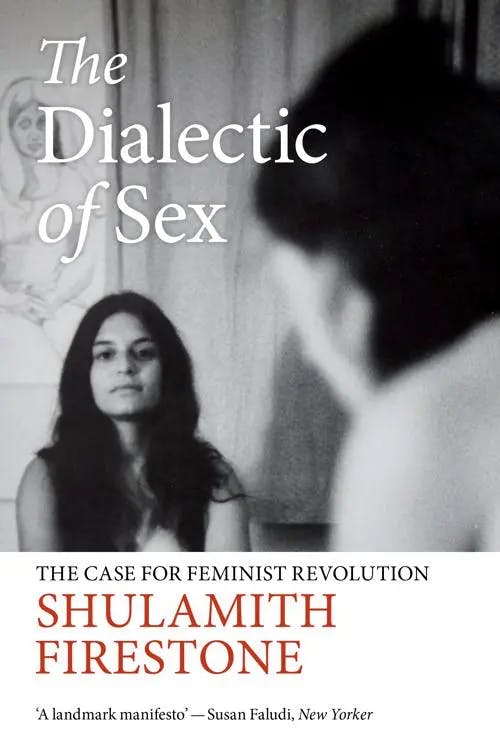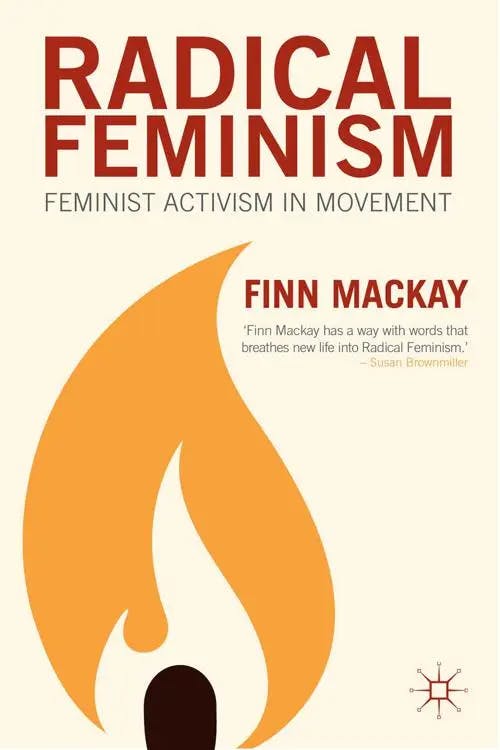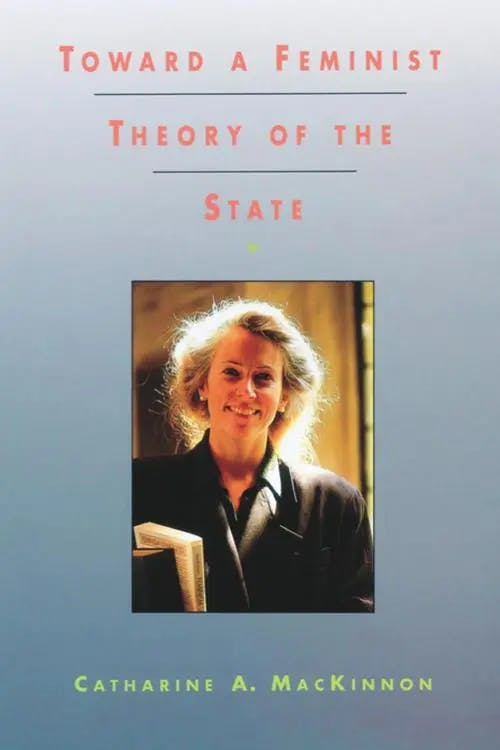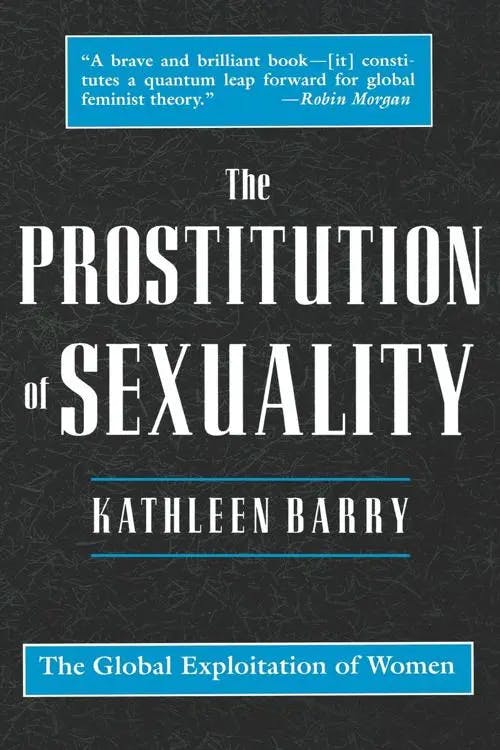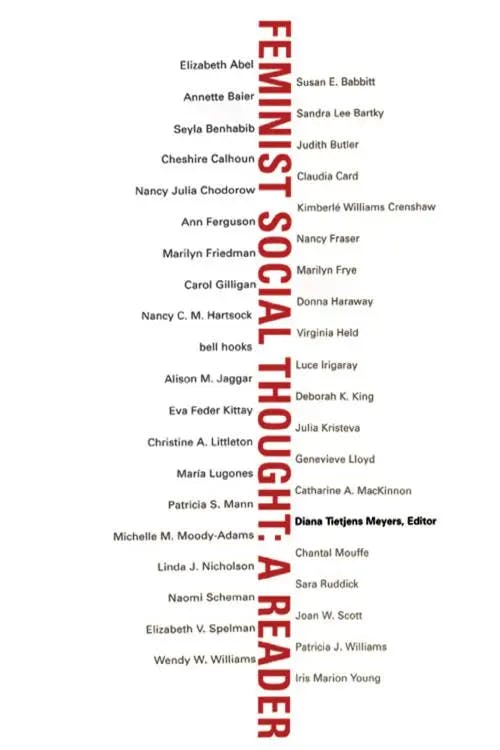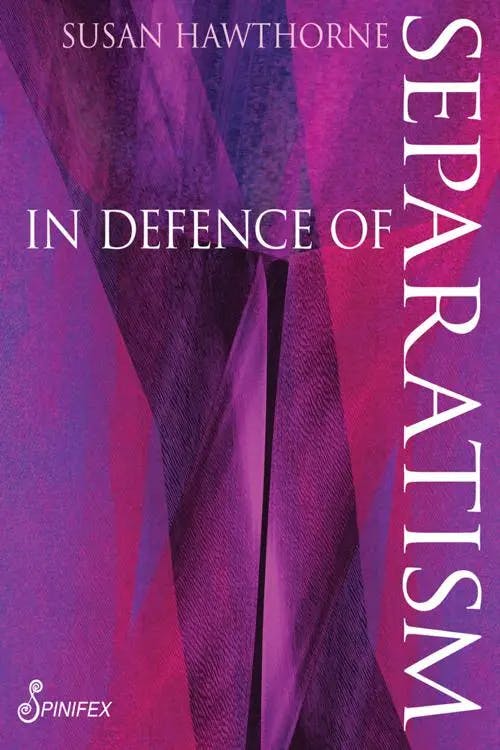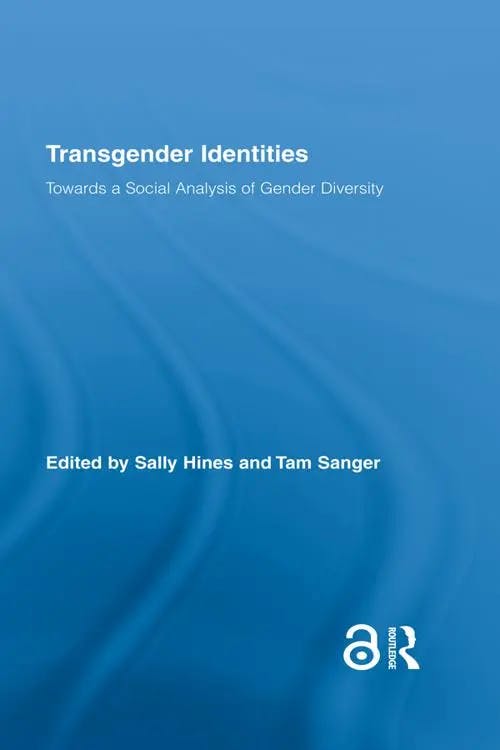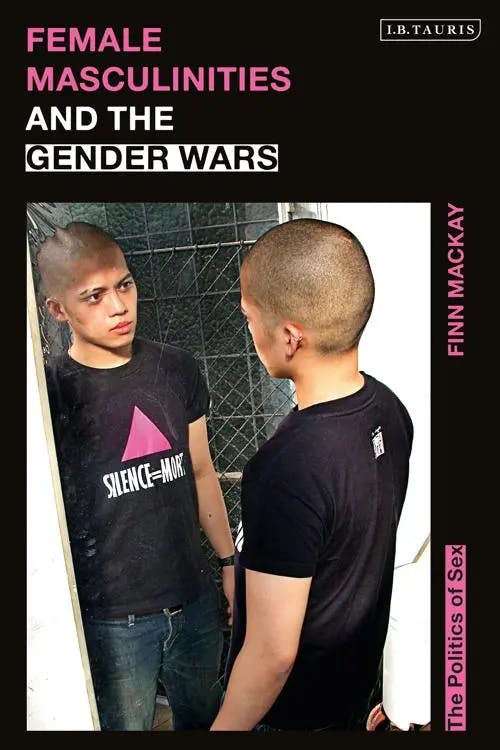What is Radical Feminism?
PhD, English Literature (Lancaster University)
Date Published: 16.03.2023,
Last Updated: 31.01.2024
Share this article
The oldest form of oppression: origins and definition
Radical feminism is perhaps the most misunderstood branch of feminism. Seen as inherently misandrist, it is often met with hostility. One needs only recall Valerie Solanas, known for her SCUM Manifesto and shooting Andy Warhol, to see radical feminism at its most extreme. Militant figures like Solanas who identified as radical feminists have led to this perception of the movement. However, as Mary Bucholtz highlights,
What makes radical feminism radical is not its goals but its founding principles; here radical means not “extreme” but “root.” For radical feminists, the root cause of social inequality is gender inequality, which is based in men’s systematic and structural subordination of women, or patriarchy. (2014)
Susan Ehrlich, Miriam Meyerhoff, Janet Holmes
What makes radical feminism radical is not its goals but its founding principles; here radical means not “extreme” but “root.” For radical feminists, the root cause of social inequality is gender inequality, which is based in men’s systematic and structural subordination of women, or patriarchy. (2014)
Radical feminism is simply a form of feminism that does not believe women can achieve gender equality within existing patriarchal power structures. It emerged in the 1960s as part of second-wave feminism, distinguishing itself from mainstream forms of feminism with its belief that all patriarchal institutions must be destroyed and rebuilt for women’s oppression to end. As Shulamith Firestone explains in her key text The Dialectics of Sex (1970, [2015]), the goal of radical feminism is
The overthrow of the oldest, most rigid class/caste system in existence, the class system based on sex — a system consolidated over thousands of years, lending the archetypal male and female roles an undeserved legitimacy and seeming permanence.
Shulamith Firestone
The overthrow of the oldest, most rigid class/caste system in existence, the class system based on sex — a system consolidated over thousands of years, lending the archetypal male and female roles an undeserved legitimacy and seeming permanence.
Radical feminists from their formation to the modern day have typically been concerned with reproductive rights, violence against women, pornography, and prostitution. As Ellen Willis argues in “Radical Feminism and Feminist Radicalism” (1984),
It's no exaggeration to say that the immense transformation in women's consciousness over the past fifteen years has been inspired by the issues radical feminists raised.
As well as focusing on violence against women and female bodily autonomy, radical feminism was also concerned with the domestic, everyday aspect of women’s lives. Breanne Fahs writes in Firebrand Feminism (2018),
Radical feminists cared deeply about the minutiae of women’s lives, seeing in the mundane and ordinary tasks women engaged in an immense amount of possibility for social change.
Breanne Fahs
Radical feminists cared deeply about the minutiae of women’s lives, seeing in the mundane and ordinary tasks women engaged in an immense amount of possibility for social change.
One of the most notable women’s rights groups was the New York Radical Women which began in 1967 and disbanded after only two years. This dissolution was caused by a “politico-feminist split” within the group: the “politicos” viewed capitalism as the primary reason for women’s oppression whereas “feminists” saw male supremacy as the root cause of gender inequality. This latter group labelled themselves “radical feminists” and formed a new group: Redstockings. A major issue for the Redstockings was abortion reform, a cause campaigned for through the use of speak-outs and storming public gatherings to bring attention to their cause. (For more information on Redstockings, see Brown, Without Apology: The Abortion Struggle Now, 2019).
Another major group was the New York Radical Feminists, founded in 1969. Further branches of the women’s liberation movement include the L.A. group Women Against Violence Against Women (WAVAW) which focused on the issue of domestic abuse. Most notably, between 1976 and 1979 the WAVAW boycotted Warner Communications for using images of violence against women in their advertising. Warner Communications relented and agreed not to use images of abused women in their advertising and implemented sensitivity training for executives (see Friedman, Consumer Boycotts, 2002).
In this guide, we’ll examine major issues addressed by radical feminism: gender-based violence, reproductive rights, the sex industry, separationism, and gender essentialism.
Reclaim the Night: protesting gender-based violence
Reclaim the Night (RTN) marches (known as Take Back the Night in the US) began as a protest against gender-based violence. The marches originated in Brussels in 1976 at the International Tribunal on Crimes Against Women. The conference, attended by over 2000 women from 40 different countries, demonstrated the impact of male violence against women on a global scale. As Finn MacKay writes in Radical Feminism (2015),
Delegates provided testimonies of the extent, impact, nature and form of male violence against women which they were resisting in their own countries. This was essentially a catalogue of brutality, a global snapshot of the various bloody ways which patriarchal governance impacts on women’s bodies.
F. Mackay
Delegates provided testimonies of the extent, impact, nature and form of male violence against women which they were resisting in their own countries. This was essentially a catalogue of brutality, a global snapshot of the various bloody ways which patriarchal governance impacts on women’s bodies.
A candlelit procession was then held to protest all forms of male violence.
The German newsletter Spare Rib covered the events of the march and soon word spread to radical feminists in the UK. These protests were hugely significant in demonstrating solidarity in the face of gender-based violence as well as challenging the notion that women must stay at home in order to be protected from violence. This is epitomized in the first UK RTN march in Leeds, organized as a response to police advice surrounding Peter Sutcliffe (also known as the Yorkshire Ripper). Sutcliffe murdered 13 women between 1975 and 1985. Prior to the identification and arrest of Sutcliffe, the police urged women to remain indoors. MacKay states that,
This impractical advice was viewed as a curfew by feminist activists, and thus the notion of reclaiming the night and the streets held particular resonance. The chosen routes of the Leeds RTN were also influenced by Sutcliffe’s crimes, passing places where victim’s bodies had been found. (2015)
A further topic of debate regarding the RTN marches was whether men should be allowed to participate. While the majority preferred a women-only or women-led protest, some activists believed there should not be exclusions as to who could attend; this gender-inclusive approach is more representative of the movement today (MacKay, 2015). Proponents of male inclusion argued that this was also a “men’s issue,” as men could also be impacted by sexual violence; activists taking this stance felt men should be included but that women should ultimately lead the march. However, most radical feminists believed men should not be included as this undermined the movement by directing the focus away from women. In addition, female marchers, they argued, may feel intimidated or unsafe by the presence of men at the march. While many would not consider the RTN marches particularly radical today, it is important to acknowledge their roots in radical feminist history.
Radicalism and reproduction
Reproductive rights have always been a top priority for radical feminism (and feminism more broadly). For radical feminists in the 1970s, reproductive freedom (i.e., the right to contraception, abortion, or to remain child-free) was seen as a basic human right. Even today, as we can see with the overturning of Roe v. Wade, these issues continue to have major significance.
Many radical feminists view childbirth as an inherently barbaric practice. In her seminal article “Radical Feminism” (1969), Ti-Grace Atkinson identifies reproduction as central to women’s oppression as women “bear the burden of the reproductive process.”
Firestone, a key radical writer on reproductive rights and the oppressive nature of the biological family, elaborates:
Nature produced the fundamental inequality — half the human race must bear and rear the children of all of them — which was later consolidated, institutionalized, in the interests of men. […] [B]efore recent methods of contraception, continuous childbirth led to constant ‘female trouble’, early ageing, and death. (The Dialectics of Sex, 1970, [2015])
Firestone explains that reproduction puts women at a disadvantage as they are weakened from the physical strain of childbirth and childrearing. Women become dependent on men to provide financially as they remain at home and raise the children. As infants take such a long time to mature and become independent, women are forced into a state of dependency on men for long periods.
The assignment of gender-based roles, Firestone argues, has not only cost women physically, psychologically, and emotionally but has also profoundly impacted society more broadly. She states,
Women were the slave class that maintained the species in order to free the other half for the business of the world […]. This natural division of labour was continued only at great cultural sacrifice: men and women developed only half of themselves. (The Dialectics of Sex, 1970, [2015])
Firestone believes that a way to free women from this burden, to use Atkinson’s term, is through artificial reproduction. These ideas would form the basis of cyberfeminism — a branch of feminism which explores the rights of women in relation to technology and digital life (see Kember, Cyberfeminism and Artificial Life, 2003).
Taking on the sex industry
The role of women in the sex industry is still fiercely debated by many feminist groups. Radical feminists tend to view all kinds of sex work as ultimately dehumanizing and argue that they normalize sexual violence against women.
Pornography
In the late 1970s in the US, several groups were formed to tackle the issue of pornography, including Women Against Pornography, Women Against Violence in Pornography (WAP), and Media and Feminists Fighting Pornography. WAP is one of the most well-known of these groups, notable for its informational tours of sex shops and pornographic theatres. In the UK, legislation-based groups were formed to tackle the issue of pornography. For example, Campaign Against Pornography (CAP) was created in 1987 with the aim of banning erotic images from tabloid newspapers. Similar groups included Campaign Against Pornography and Censorship, and Angry Women.
Feminists argued that pornography was detrimental to both performers and viewers. They posited that women acting in pornography were exploited, abused, and unable to consent. This belief was reaffirmed when Linda Boreman (known as Linda Lovelace) published her autobiography Ordeal (1980). Boreman revealed she had been abused and exploited during the making of the pornographic film Deep Throat (Damiano, 1972).
In addition to the harm done to women within the industry, many found that the viewing of pornography spawned further discrimination and abuse against women. In Toward a Feminist Theory of the State (1991), Catharine A. MacKinnon writes,
Pornography contributes causally to attitudes and behaviors of violence and discrimination which define the treatment and status of half the population.
Catharine A. MacKinnon
Pornography contributes causally to attitudes and behaviors of violence and discrimination which define the treatment and status of half the population.
Radical feminists believe that the objectification of women in pornography normalises the oppression of women, contributing to cases of domestic abuse and sexual assault.
Prostitution
Critic Kathleen L. Barry has spoken out against sex work, believing it to be a violation to which women are unable to consent:
In the fullness of human experience, when women are reduced to their bodies, and in the case of sexual exploitation to sexed bodies, they are treated as lesser, as other, and thereby subordinated […] prostitution, with or without a woman’s consent, is the institutional, economic, and sexual model for women’s oppression. (1996)
Kathleen L. Barry
In the fullness of human experience, when women are reduced to their bodies, and in the case of sexual exploitation to sexed bodies, they are treated as lesser, as other, and thereby subordinated […] prostitution, with or without a woman’s consent, is the institutional, economic, and sexual model for women’s oppression. (1996)
Prostitution, for Barry, is a way that men can continue to control economically independent women. As these women seek autonomy away from male control, away from the institution of marriage, the “social control of women is reinforced in the public world by invoking women’s consent to the prostitution of sexuality” (Barry, 1996).
Andrea Dworkin writes in her famous essay “Prostitution and Male Supremacy” (1993),
Prostitution in and of itself is an abuse of a woman's body.[...] In prostitution, no woman stays whole. It is impossible to use a human body in the way women's bodies are used in prostitution and to have a whole human being at the end of it, or in the middle of it, or close to the beginning of it. It's impossible. And no woman gets whole again later, after.
Dworkin’s view has been critiqued for the lack of agency it allows women in the sex trade. Molly Smith and Juno Mac highlight that, because of radical feminists such as Dworkin, “[s]ex working feminists have long found themselves harshly excluded, and not only by de-humanising language in academia, but by explicit lack of invitation into spaces” (Revolting Prostitutes, 2018).
A place of one’s own…
An alternative to living under patriarchy proposed by some radical feminists is separatism. Separatism is the belief that women can achieve freedom and resist patriarchal control by separating themselves from men. This separation, Marilyn Frye outlines, is
Separation of various sorts or modes from men and from institutions, relationships, roles and activities that are male-defined, male-dominated, and operating for the benefit of males and the maintenance of male privilege. (2014)
Diana Tietjens Meyers
Separation of various sorts or modes from men and from institutions, relationships, roles and activities that are male-defined, male-dominated, and operating for the benefit of males and the maintenance of male privilege. (2014)
Susan Hawthorne distinguishes the difference between segregation and separatism:
Segregation is an instance of coercive power, a manifestation of domination. Separatism is a means of resisting oppression, a withdrawal of support or action, and potentially a strategy for liberation. Both are powerful political devices. The distinction depends on who is initiating the separation and for what purpose. (1976)
Susan Hawthorne
Segregation is an instance of coercive power, a manifestation of domination. Separatism is a means of resisting oppression, a withdrawal of support or action, and potentially a strategy for liberation. Both are powerful political devices. The distinction depends on who is initiating the separation and for what purpose. (1976)
Hawthorne explains that the main difference between separatism and segregation is whether the oppressed is voluntarily choosing to separate from the dominant power.
Separatism can manifest in a number of ways, including women’s refusal to participate in heterosexual relationships and engaging in either celibacy or lesbian relationships. Hawthorne writes,
Heterosexuality underlies all of the ways that patriarchy maintains women’s oppression: its consequences are the major factors contributing to women’s limited access to, and exercise of, power. (1976)
Hawthorne notes, however, that only a small minority engaged in lesbian feminism (often referred to as political lesbianism) as a strategy. Hawthorne further goes on to outline some of the arguments against separatism, including the fact that not all women will want to engage in it and that separatism can be seen as a manifestation of sexism (1976).
Rethinking gender
Radical feminists have long rejected biological essentialism — the belief that gender roles are innate and biologically determined. As radical feminists argue, essentialism has been used by the patriarchy to reinforce traditional gender roles. Throughout history women have been viewed as the more nurturing and passive sex and, as such, have been confined to the domestic realm of childrearing and housework. Radical feminists such as Judith Butler argue that gender is constructed socially and not something we are born with (Gender Trouble: Feminism and the Subversion of Identity (1990, [2011]). Firestone further argues that the end goal of feminism is “not just the elimination of male privilege but of the sex distinction itself: genital differences between human beings would no longer matter culturally” (The Dialectics of Sexuality, 1970, [2015]).
Despite the construction of gender being a tenet on which most radical feminists seem to agree, the inclusion of transgender women (and the recognition of transgender women as women) continues to be a point of contestation. Those arguing for the exclusion of trans women in feminist issues often base their arguments on the notion that, while gender is constructed, biological sex is immutable. This group are referred to as “gender critical feminists” or, more commonly, “TERFS” (trans-exclusionary radical feminists). As Sally Hines writes in Transgender Identities (2010),
In problematising a unified concept of gender, trans practices challenge feminist politics of identity. Strands of radical feminism responded to these complexities by defending the category of “woman” through recourse to both biological “sex” and gendered socialisation.
Sally Hines, Tam Sanger
In problematising a unified concept of gender, trans practices challenge feminist politics of identity. Strands of radical feminism responded to these complexities by defending the category of “woman” through recourse to both biological “sex” and gendered socialisation.
Examples of trans-exclusionary radical feminists include prominent writer Julie Bindel, whose article “Gender benders, beware” in The Guardian in 2004 received over 200 complaints due to transphobic comments, and Germaine Greer who made several offensive comments regarding transgender people on BBC Newsnight in 2015 (see Hines, “The feminist frontier: on trans and feminism”, Journal of Gender Studies, 2017). Bindel has since been included in the National Union of Students (NUS) “No Platforming Policy” following protests at planned public appearances.
However, there are numerous radical feminists who argue for trans-inclusion within the movement, such as Andrea Dworkin. Similarly, feminists such as MacKinnon argue that feminism must acknowledge and incorporate transgender rights, as discrimination on the basis of being trans is sex-based discrimination (see “Ask a Feminist: Sexual Harassment in the Age of #MeToo,” Signs, 2018).
Finn Mackey argues in Female Masculinities and the Gender Wars (2021),
Acknowledging that some strands of Radical Feminism have indeed bordered on essentialist, have homogenized trans women and trans men and promoted hateful stereotypes of trans women as sexual fetishists does not have to mean that whole school of feminism is redundant or should be jettisoned.
Finn Mackay
Acknowledging that some strands of Radical Feminism have indeed bordered on essentialist, have homogenized trans women and trans men and promoted hateful stereotypes of trans women as sexual fetishists does not have to mean that whole school of feminism is redundant or should be jettisoned.
MacKay goes on to state that transphobia is not synonymous with radical feminism, despite the presence of the word “radical” within “trans-exclusive radical feminism.”’
The pitfalls and problems of radical feminism
One of the main criticisms of radical feminism, other than the gender-essentialism debate previously outlined, is its generalized view of the patriarchy. Caroline Ramazanoglu states that this “ahistorical view of patriarchy […] raises very directly issues of biological reductionism and conceptions of the innate essences of being male and being female” (Feminism and the Contradictions of Oppression, 2012). Ramazanoglu does highlight, however, that this generalised use of the term “patriarchy” was effective “in drawing women’s attention to the extent of male dominance” (2012).
Critics have argued that radical feminism fails to take into account other cultural and societal factors such as capitalism. Zillah R. Eisenstein advocates a movement towards socialist feminism which explores how capitalism and patriarchy combine to oppress women. Eisenstein argues that “power is dealt with in a dichotomous way by socialist women and radical feminists” as each group focuses solely on either economics or sex. She writes that “such a conceptual picture of woman hampers the understanding of the complexity of her oppression” (Eisenstein, Capitalist Patriarchy and the Case for Socialist Feminism, 2019).
Though some of the ideas in radical feminism, such as separatism, seem untenable in our modern world, radical feminism is still very much thriving, in new and innovative ways. In Firebrand Feminism, Fahs identifies how radical feminism exists today through several newer movements such as Code Pink, and in the politics surrounding trans rights and abortion rights.
Fahs goes on to state that,
We need radicalism — its difficulty, its provocations, its challenges to notions of respectability and politeness, its wildness, its insistence that we keep on digging — more today than ever before. […] We need persistent complainers, incessant troublemakers, and a threat of disruption to the status quo. (2018)
Breanne Fahs
We need radicalism — its difficulty, its provocations, its challenges to notions of respectability and politeness, its wildness, its insistence that we keep on digging — more today than ever before. […] We need persistent complainers, incessant troublemakers, and a threat of disruption to the status quo. (2018)
Regardless of what new forms radical feminism takes — for example, whether it begins to incorporate a socialist ideology — its influence on feminism today is undeniable. In particular, radical feminists like MacKinnon and Dworkin have been instrumental in supporting women who have been exploited by the sex industry, through both their scholarly writing and their political advocacy. Views on the nuclear family and childbirth by Firestone have continued to be relevant as women in the twenty-first century reject motherhood as the only viable future for them. At a further extreme, the growing 4B movement in South Korea is premised on four radical feminist refusals: rejection of heterosexual marriage, childbirth, dating, and heterosexual sexual relationships. Some women in the movement have begun distancing themselves even from male friends, achieving a form of separatism. Despite its controversial reputation, radical feminism continues to offer ways of exploring and dismantling gender constructs and promoting gender equality.
Further radical feminism reading on Perlego
Jenson, R. (2017) The End of Patriarchy: Radical Feminism for Men. Spinifex Press. Available at: https://www.perlego.com/book/1566833/the-end-of-patriarchy-radical-feminism-for-men-pdf
Rhodes, J. (2012) Radical Feminism, Writing, and Critical Agency: From Manifesto to Modem. SUNY Press. Available at: https://www.perlego.com/book/2672211/radical-feminism-writing-and-critical-agency-from-manifesto-to-modem-pdf
Thompson, D. (2001) Radical Feminism Today. Sage Publications. Available at: https://www.perlego.com/book/863516/radical-feminism-today-pdf
Bibliography
Barry, K. (1996) The Prostitution of Sexuality. NYU Press. Available at: https://www.perlego.com/book/720704/the-prostitution-of-sexuality-pdf
Bucholtz, M. (2014) “The Feminist Foundations of Language, Gender, and Sexuality Research” in eds. S. Ehrlich, M. Meyerhoff and J. Holmes, The Handbook of Language, Gender, and Sexuality. Wiley-Blackwell. Available at: https://www.perlego.com/book/998197/the-handbook-of-language-gender-and-sexuality-pdf
Brown, J. (2019) Without Apology: The Abortion Struggle Now. Verso. Available at: https://www.perlego.com/book/1253921/without-apology-the-abortion-struggle-now-pdf
Butler, J. (1990 [2011]) Gender Trouble: Feminism and the Subversion of Identity. Routledge. Available at: https://www.perlego.com/book/1607112/gender-trouble-feminism-and-the-subversion-of-identity-pdf
Dworkin, A (1993) “Prostitution and Male Supremacy”, Michigan Journal of Gender and Law, 1. Available at: https://repository.law.umich.edu/mjgl/vol1/iss1/1/?utm_source=repository.law.umich.edu%2Fmjgl%2Fvol1%2Fiss1%2F1&utm_medium=PDF&utm_campaign=PDFCoverPages
Eisenstein, Z. R. (2019) Capitalist Patriarchy and the Case for Socialist Feminism. Monthly Review Press. Available at: https://www.perlego.com/book/967467/capitalist-patriarchy-and-the-case-for-socialist-feminism-pdf
Fahs, B. (2018) Firebrand Feminism. University of Washington Press. Available at: https://www.perlego.com/book/723954/firebrand-feminism-the-radical-lives-of-tigrace-atkinson-kathie-sarachild-roxanne-dunbarortiz-and-dana-densmore-pdf
Firestone, S. (1970 [2015])The Dialectics of Sex. Verso. Available at: https://www.perlego.com/book/731006/the-dialectic-of-sex-the-case-for-feminist-revolution-pdf
Friedman, M. (2002) Consumer Boycotts. Routledge. Available at: https://www.perlego.com/book/1607776/consumer-boycotts-effecting-change-through-the-marketplace-and-media-pdf
Frye, M. (2014) “Some Reflections on Separatism and Power” in eds. D. Tiejens Meyers, Feminist Social Thought: A Reader. Routledge. Available at: https://www.perlego.com/book/1614731/feminist-social-thought-a-reader-pdf
Hawthorne, S. (1976) In Defence of Separatism. Spinifex Press. Available at: https://www.perlego.com/book/1566811/in-defence-of-separatism-pdf
MacKay, F. (2015) Radical Feminism. Palgrave Macmillan. Available at: https://www.perlego.com/book/3487491/radical-feminism-feminist-activism-in-movement-pdf
Hines, S (2010). Transgender Identities: Towards a Social Analysis of Gender Diversity. Routledge. Available at: https://www.perlego.com/book/1692053/transgender-identities-towards-a-social-analysis-of-gender-diversity-pdf
Hines, S. (2017) “The feminist frontier: on trans and feminism”, Journal of Gender Studies, 28. Available at: https://www.tandfonline.com/doi/abs/10.1080/09589236.2017.1411791
Kember, S. (2003) Cyberfeminism and Artificial Life. Routledge. Available at: https://www.perlego.com/book/1619083/cyberfeminism-and-artificial-life-pdf
Mackey, F. (2021) Female Masculinities and the Gender Wars. I. B. Tauris. Available at: https://www.perlego.com/book/2827963/female-masculinities-and-the-gender-wars-the-politics-of-sex-pdf
Mackinnon, C. A. (1991) Toward a Feminist Theory of the State. Harvard University Press. Available at: https://www.perlego.com/book/2094996/toward-a-feminist-theory-of-the-state-pdf
MacKinnon, C. A. and D. Mitra (2018) “Ask a Feminist: Sexual Harassment in the Age of #MeToo”. Signs. Available at: https://www.journals.uchicago.edu/doi/abs/10.1086/702290
Ramazanoglu, C. (2012) Feminism and the Contradictions of Oppression. Routledge. Available at: https://www.perlego.com/book/1618185/feminism-and-the-contradictions-of-oppression-pdf
Solanas, V. (1968 [2016]) SCUM Manifesto. Verso. https://www.perlego.com/book/731099/scum-manifesto-pdf
Smith, M and J. Mac (2018) Revolting Prostitutes: The Fight for Sex Workers' Rights. Verso. Available at: https://www.perlego.com/book/827856/revolting-prostitutes-the-fight-for-sex-workers-rights-pdf
Sussman, A. L. (2023) “A World Without Men,” The Cut, 8 March. Available at: https://www.thecut.com/2023/03/4b-movement-feminism-south-korea.html
Willis, E. (1984)“Radical Feminism and Feminist Radicalism”. Social Text, 9. Available at: https://www.jstor.org/stable/466537
What is radical feminism in simple terms?
What are some key issues for radical feminism?
How does radical feminism differ from liberal, or mainstream, feminism?
Who are some key radical feminist thinkers?
What is an example of radical feminist ideology?
PhD, English Literature (Lancaster University)
Sophie Raine has a PhD from Lancaster University. Her work focuses on penny dreadfuls and urban spaces. Her previous publications have been featured in VPFA (2019; 2022) and the Palgrave Handbook for Steam Age Gothic (2021) and her co-edited collection Penny Dreadfuls and the Gothic was released in 2023 with University of Wales Press.


